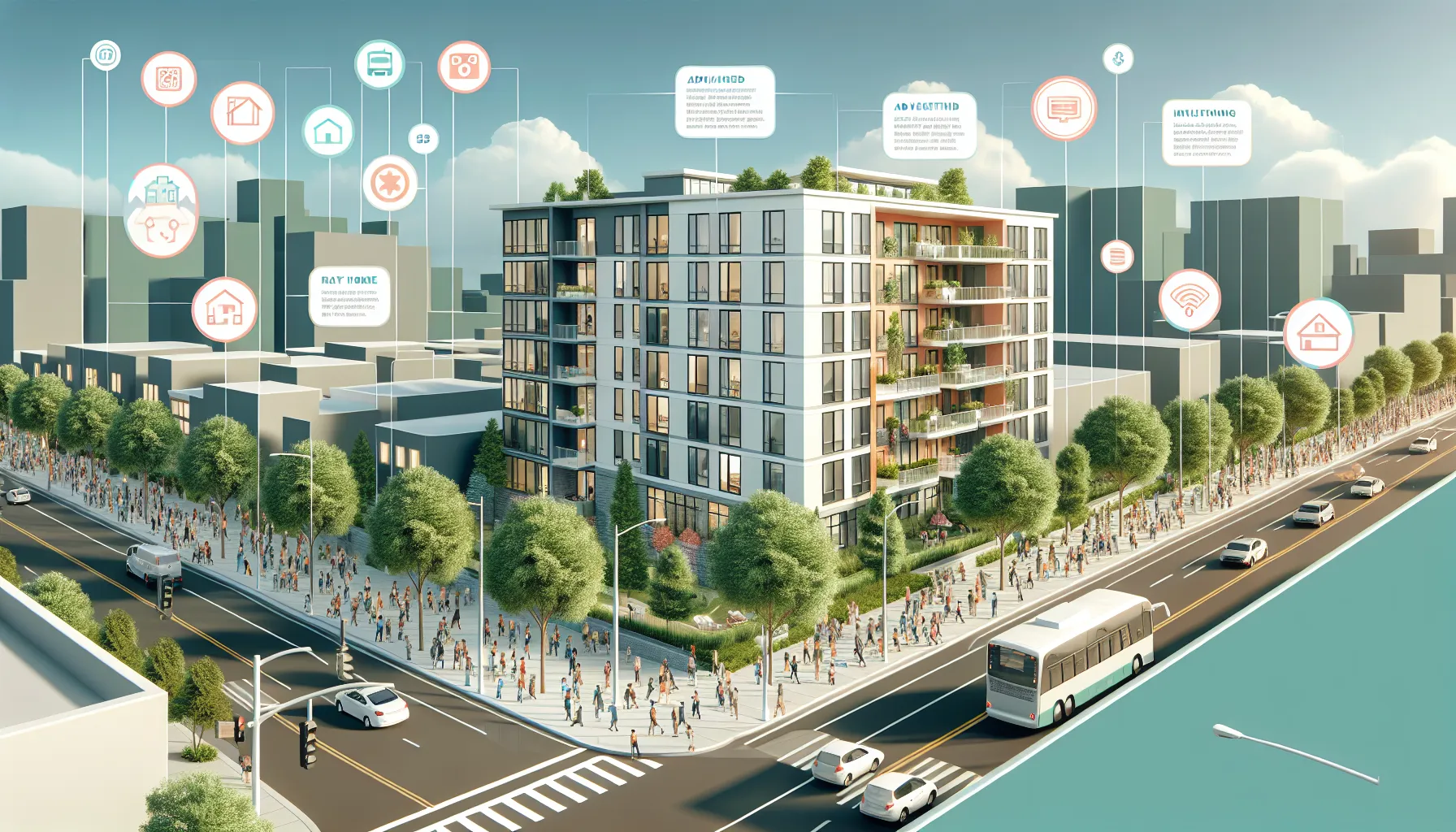Key Takeaways
- Fremont property revenue has experienced steady growth, with residential rents increasing around 6% since 2022 due to strong tech-driven job demand and low vacancy rates.
- Properties with modern amenities and smart features command higher rental rates, appealing to the influx of professionals and helping owners maximize returns.
- Keeping up with local regulations, including rent control and tax changes, is vital to maintaining stable property revenue and adapting to potential market shifts.
- Utilizing detailed market data, regular portfolio reviews, and proactive communication with tenants leads to better occupancy rates and consistent cash flow.
- Both residential and commercial property owners benefit from periodic upgrades and staying alert to changing tenant expectations, especially amid evolving work trends.
- Future outlook remains positive, driven by ongoing population growth and business expansion, but owners should remain flexible and monitor both economic and regulatory changes for optimal results.
Property revenue trends in Fremont have caught my attention lately. With so many homeowners and investors relying on steady rental income, it’s no surprise everyone wants to know what’s really happening in this market. Are rents rising as quickly as people say? How do recent shifts affect your long-term returns?
I understand how important it is to feel confident about your investment decisions. Whether you’re managing a single property or a larger portfolio, having clear insights can make all the difference. Have you noticed changes in your rental income, or are you curious about what drives these shifts in Fremont? Let’s take a closer look at the factors shaping property revenue so you can make informed choices moving forward.
Overview of Property Revenue Trends in Fremont
Fremont property revenue trends reflect both steady demand and market shifts. Over the past two years, I’ve noticed monthly rental rates rise in residential neighborhoods, with average rents increasing by about 6% since 2022. Investors and homeowners often ask how fluctuations impact ongoing returns, especially after periods of rapid growth. Are you noticing the same steady growth, or are your experiences different?
Rental demand remains high, driven by a continued influx of tech-driven job opportunities. Properties with modern amenities and updated appliances tend to secure higher lease rates than older homes. Have you seen higher offers on recently renovated units compared to original condition rentals?
Vacancy rates in Fremont generally fall below 4%, based on recent East Bay market data. This low percentage supports stable cash flow for most landlords. High occupancy gives owners peace of mind, but what happens if market conditions shift or more units become available at once?
Property owners managing larger portfolios, such as those with five or more properties, see the most pronounced effects of year-over-year increases. Diversified portfolios usually reduce risk, but how are shifts in neighborhood desirability or population changes affecting your overall rental income?
East Bay property management professionals report that clear, timely communication keeps tenants satisfied and rents consistent. Regular market reviews help owners respond promptly to new trends. What strategies have made the greatest difference for you in maintaining strong revenue?
Rental properties in Fremont continue to deliver steady returns, though every market cycle brings new factors to consider. Accurate data and a proactive approach help owners adapt and plan for both growth and stability.
Key Factors Influencing Property Revenue

Understanding the shifting property revenue in Fremont means looking closely at what’s shaping rental income. Have you wondered why some homes earn more, even when they’re in the same neighborhood?
Economic Growth and Local Development
Tech sector expansion and business growth in Fremont increase job opportunities. Strong employment numbers bring more residents, pushing demand for quality rentals higher. New commercial spaces and infrastructure projects often raise neighborhood value. When businesses set up shop nearby, properties often see improved rental rates as local amenities attract more tenants.
Fluctuations in Rental Demand
Rental demand changes with population shifts and employment trends. More tech professionals moving into Fremont create rising interest in well-maintained properties. School district ratings and nearby public transit also drive up rental appeal. If demand weakens, even upgraded properties may see slower income growth. Are you seeing more inquiries from tenants, or noticing longer vacancy periods?
Government Policies and Taxation
State and city regulations can change the cost structure for property owners. Local rent control rules, building codes, and eviction policies may impact cash flow and revenue stability. Tax rate increases or new incentive programs can shift your returns quickly. Staying alert to policy changes helps prevent surprises and supports consistent revenue. How often do you review local regulations or consult with housing experts on legal updates?
Methods for Conducting Property Revenue Trend Analysis in Fremont

Property revenue trend analysis in Fremont starts with a clear look at local numbers and the right questions. Interested in understanding how income shifts over time? Let’s explore practical ways to gather information and analyze results.
Data Collection and Sources
I collect data from local real estate listings, property management reports, and public records. To track actual rental rates, I review listings for single-family homes, condos, and apartments throughout Fremont. Public databases offer historical rent trends, occupancy figures, and turnover rates.
I also examine reports from area housing authorities and city agencies for stats like average monthly rents, vacancy rates, and recent permit activity. Property owners often share meaningful insights too—how have your rental earnings changed in the past year? These practical sources help build an accurate revenue picture.
Analytical Tools and Techniques
I use reliable spreadsheet software and property management tools to sort and process data. Charting rent changes year over year paints a clear picture of growth or dips. Comparing vacancy trends alongside rent amounts helps me see if shifts in demand are affecting income. Did you notice any seasonal changes in your earnings?
Mapping neighborhoods in Fremont highlights pockets of stronger returns. I look for patterns—are properties near transit lines or new businesses seeing higher rents? I find that tracking expenses like maintenance and turnover costs next to revenue helps me better estimate net returns.
Simple visual tools, like bar graphs and moving averages, make it easy for me to spot trends without advanced math. Rather than relying on single points in time, I focus on patterns across several years. What trends have you noticed in your own properties?
These step-by-step methods build the foundation for confident decisions and help me stay ahead of changes in Fremont’s rental market.
Recent Patterns in Fremont’s Property Revenue

Fremont’s property revenue trends show shifts that matter to both investors and homeowners. Many people wonder how local properties achieve such consistent returns and what’s driving the steady growth.
Residential Property Revenue Trends
Residential rental income in Fremont has grown steadily over the past two years. Average rent prices have jumped about 6% since 2022, according to market data. This increase closely tracks the steady arrival of new tech jobs in the city. Demand remains strong, keeping vacancy rates below 4%. Many owners tell me that properties with upgrades such as smart-home features or in-unit laundry see higher lease rates—have you noticed tenants asking for similar amenities in your rentals?
Staying current with market reviews helps maintain long-term tenant satisfaction and income stability. Owners managing multiple homes often see sharper year-over-year revenue shifts, especially during periods of fast rent climbs or economic adjustments. How are you tracking your own rental shifts, and do you compare them to neighborhood averages?
Commercial Property Revenue Trends
Commercial property income reflects both local business growth and national shifts. In Fremont, leasing activity picked up as new business parks opened and more office tenants moved in during the past year. Typical lease rates for commercial spaces rose 4%-5% from 2022 through 2023. Retail and office spaces in high-traffic corridors reported fewer vacancies and stronger lease renewal rates. What kinds of commercial tenants are you seeing interested in your properties right now?
Factors like population growth and the continued expansion of tech companies keep fueling demand for both residential and commercial spaces. Owners who review their lease terms regularly and stay alert for changes in tenant needs often see higher renewal rates and better returns. Are you finding that longer lease terms or shorter, flexible contracts work better in your portfolio?
Understanding these trends doesn’t just ease property concerns—it opens up new opportunities for increasing returns. Which property revenue shifts have surprised you in Fremont lately?
Future Outlook for Property Revenue in Fremont

Property revenue in Fremont enters a new phase shaped by rising tech employment and steady migration patterns. Rent prices keep climbing, with residential rates increasing by about 6% since 2022. This growth trend reflects ongoing demand from professionals relocating for work opportunities. Vacancy rates remain below 4%, pointing to strong rental stability and positive cash flow for property owners.
Investors often ask what factors might influence future returns. City infrastructure projects and new corporate offices will likely keep rental demand high, especially near major transportation hubs and tech corridors. Do you notice shifts in your tenants’ expectations—or are you seeing interest in eco-friendly upgrades? Properties offering smart home features or sustainability upgrades frequently command premium rents. This pattern shows that minor improvements can boost future revenue.
Changes in local policies also play a role. Updates to rent control measures and property tax rules in Fremont occasionally affect revenue receipts and long-term yield. How are you monitoring changes in these regulations? Owners who stay engaged with local updates are better positioned to adjust pricing and lease terms when rules shift.
Commercial properties in Fremont show similar strength. Typical lease rates for business space saw a 4%-5% bump from 2022 to 2023. As new companies move in, owners of well-maintained units often experience shorter vacancy periods and higher monthly income. Is your commercial property ready to attract expanding businesses? Periodic upgrades and regular tenant feedback often pay off.
Renters’ expectations will likely keep evolving, especially with remote work flexibility becoming standard. This trend could change what amenities are most valuable. How are you preparing your properties for these new preferences? Staying responsive helps keep occupancy high and strengthens your reputation with tenants.
Property revenue growth isn’t guaranteed every year, but careful attention to economic and regulatory indicators will help you adjust ahead of downturns. Which data sources do you trust for your revenue predictions? Regular analysis helps uncover opportunities and lets you make informed decisions for your investments.
Conclusion
Staying ahead in Fremont’s property market means keeping a close eye on both economic trends and evolving renter expectations. I’ve found that tracking these shifts helps me make smarter decisions and spot new opportunities for growth.
By remaining proactive and informed I’m able to adapt my strategies and maximize returns even as the market changes. Fremont’s dynamic environment rewards those who are willing to learn and adjust—qualities I consider essential for long-term success in property investment.
Frequently Asked Questions
What are the current trends in property revenue in Fremont?
Fremont’s property revenue is rising steadily, with average residential rents up about 6% since 2022. Both residential and commercial rental markets are experiencing strong demand, driven largely by tech job growth and local business expansion.
Why are rental rates increasing in Fremont?
Rental rates in Fremont are increasing due to a surge in tech jobs, population growth, and ongoing development projects. High demand for well-located and updated properties is pushing lease prices higher.
What factors most influence rental income in Fremont?
Key factors include local economic growth, tech sector expansion, population shifts, property condition, and government policies related to rent control and taxation. These factors together shape rental demand and revenue stability.
How do vacancy rates impact property revenue?
Low vacancy rates—typically under 4% in Fremont—help landlords maintain steady cash flow and reduce risk. High occupancy means properties generate consistent rental income and minimize costly empty periods.
How can property owners analyze rental trends in Fremont?
Owners should gather data from real estate listings, management reports, and public records. Using spreadsheets and mapping tools helps identify rental rate changes, vacancy patterns, and neighborhood trends for better investment decisions.
What should investors monitor to maximize rental property returns?
Investors should monitor local job growth, population trends, new development projects, tenant expectations, and any changes in city regulations. Regularly reviewing lease terms and staying proactive also help maximize returns.
How is Fremont’s commercial rental market performing?
Fremont’s commercial sector is growing, with typical lease rates increasing by 4%-5% from 2022 to 2023. Business expansion and low vacancy rates are driving stronger returns for well-maintained commercial spaces.
How do local policies affect property revenue?
Local policies, such as rent control and tax regulations, can directly impact cash flow and revenue. Owners should stay updated on new rules to better manage risks and maintain consistent property income.
What future trends may affect rental income in Fremont?
Ongoing tech growth, infrastructure projects, and steady migration are likely to keep rental demand high. Features like eco-friendly upgrades and smart home technology can also help properties command premium rents.
Why is regular market review important for property owners?
Regularly reviewing the local rental market helps owners spot trends, adjust rates, meet tenant needs, and respond quickly to regulatory or economic changes—supporting long-term revenue stability and growth.
